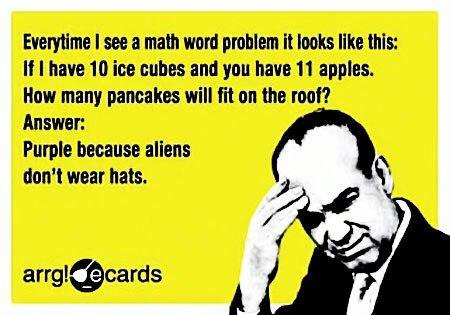ataraxia
Avid Member
Ever think. How many feeders should he/she be eating to maintain weight? or My animal is a little over weight and i want to put he/she on a diet but dont know where to start? or maybe your animal is skinny and you want to put a little meat on them bones...The info below is a base intake on a young average adult. Age, temperature, activity, individual metabolic rate, etc. will play a roll in your final calculations.
I recently came across some pretty interesting info on daily calorie intake per weight of animal. This is a reference point to base how much you should feed your animal.
You will need a gram scale to start. You will need to weigh your chameleon. Then weigh your feeders.
This formula is based off of 5.6 calories per 1000g/. (5.6 x per kilogram)
Now you take the formulation below that is based off of 100 grams. Im in the process of finding out if the analysis given was done by a independent study or if they was taken off of a website and calculated. Either way great info. I am also collecting weights of insects and will post. Weight is going to vary. So it will be best to weigh on your personal stock to be a little more precise.
Fat contains 9 kcal per gram
Protein contains 4 kcal per gram
Carbohydrates contain 4 kcal per gram
Organic acids contain 3 kcal per gram
Fiber contains 2 kcal per gram
Crickets; 12.9% protein (51.6 kcal), 5.5% fat (49.5 kcal), 5.1% carbohydrates (20.4 kcal), 3.2% fiber (6.4 kcal), total kilocalories (127.9 kcal/100g)
Mealworms; 19% protein (76.0 kcal), 14% fat (126 kcal), 4% carbohydrates (16 kcal), 2% fiber (4 kcal), total kilocalories (222 kcal/100g)
Superworm; 18.92% protein (75.68 kcal), 15.07% fat (135.63 kcal), 5.81% carbohydrates (23.24 kcal), 2.2% fiber (4.4 kcal), total kilocalories (238.95 kcal/100g)
Wax worm; 15.4% protein (61.6 kcal), 20.12% fat (181.08 kcal), 2.54% carbohydrates (10.16 kcal), 1.6% fiber (3.2 kcal), total kilocalories (256.04 kcal/100g)
Fly larva; 15.32% protein (61.28 kcal), 5.96% fat (53.64 kcal), 8.46% carbohydrates (33.84 kcal), 2.7% fiber (5.4 kcal), total kilocalories (154.16 kcal/100g)
Dubia; 35.6% protein (142.4 kcal), 6.75% fat (60.75 kcal), ??.?% carbohydrates (??.? kcal), 3.25% fiber (6.5 kcal), total kilocalories (>209.65 kcal/100g)
Turkestan; 36.5% (146.0 kcal), 5.31% fat (47.79 kcal), ??.?% carbohydrates (??.? kcal), 2.19% fiber (4.38 kcal), total kilocalories (>198.17 kcal/100g)
Portentosa; 26.7% (106.8 kcal), 5.05% fat (45.45 kcal), ??.?% carbohydrates (??.? kcal), 5.62% fiber (11.24 kcal), total kilocalories (>163.49 kcal/100g)
So basically if you had a 150 gram chameleon and fed him dubia that weighed 1 gram a piece. You would need to feed approx 3-4 x 1 gram dubia to maintain weight. Note: Carbs have not been factored in on dubia.
Credit to: Maurice Pudlo
NOW! We need some information like this containing base amounts of Ca, VitD, Vita, etc daily intake per 1000kg and we could have this down to an art!
I recently came across some pretty interesting info on daily calorie intake per weight of animal. This is a reference point to base how much you should feed your animal.
You will need a gram scale to start. You will need to weigh your chameleon. Then weigh your feeders.
This formula is based off of 5.6 calories per 1000g/. (5.6 x per kilogram)
Now you take the formulation below that is based off of 100 grams. Im in the process of finding out if the analysis given was done by a independent study or if they was taken off of a website and calculated. Either way great info. I am also collecting weights of insects and will post. Weight is going to vary. So it will be best to weigh on your personal stock to be a little more precise.
Fat contains 9 kcal per gram
Protein contains 4 kcal per gram
Carbohydrates contain 4 kcal per gram
Organic acids contain 3 kcal per gram
Fiber contains 2 kcal per gram
Crickets; 12.9% protein (51.6 kcal), 5.5% fat (49.5 kcal), 5.1% carbohydrates (20.4 kcal), 3.2% fiber (6.4 kcal), total kilocalories (127.9 kcal/100g)
Mealworms; 19% protein (76.0 kcal), 14% fat (126 kcal), 4% carbohydrates (16 kcal), 2% fiber (4 kcal), total kilocalories (222 kcal/100g)
Superworm; 18.92% protein (75.68 kcal), 15.07% fat (135.63 kcal), 5.81% carbohydrates (23.24 kcal), 2.2% fiber (4.4 kcal), total kilocalories (238.95 kcal/100g)
Wax worm; 15.4% protein (61.6 kcal), 20.12% fat (181.08 kcal), 2.54% carbohydrates (10.16 kcal), 1.6% fiber (3.2 kcal), total kilocalories (256.04 kcal/100g)
Fly larva; 15.32% protein (61.28 kcal), 5.96% fat (53.64 kcal), 8.46% carbohydrates (33.84 kcal), 2.7% fiber (5.4 kcal), total kilocalories (154.16 kcal/100g)
Dubia; 35.6% protein (142.4 kcal), 6.75% fat (60.75 kcal), ??.?% carbohydrates (??.? kcal), 3.25% fiber (6.5 kcal), total kilocalories (>209.65 kcal/100g)
Turkestan; 36.5% (146.0 kcal), 5.31% fat (47.79 kcal), ??.?% carbohydrates (??.? kcal), 2.19% fiber (4.38 kcal), total kilocalories (>198.17 kcal/100g)
Portentosa; 26.7% (106.8 kcal), 5.05% fat (45.45 kcal), ??.?% carbohydrates (??.? kcal), 5.62% fiber (11.24 kcal), total kilocalories (>163.49 kcal/100g)
So basically if you had a 150 gram chameleon and fed him dubia that weighed 1 gram a piece. You would need to feed approx 3-4 x 1 gram dubia to maintain weight. Note: Carbs have not been factored in on dubia.
Credit to: Maurice Pudlo
NOW! We need some information like this containing base amounts of Ca, VitD, Vita, etc daily intake per 1000kg and we could have this down to an art!
Last edited:






